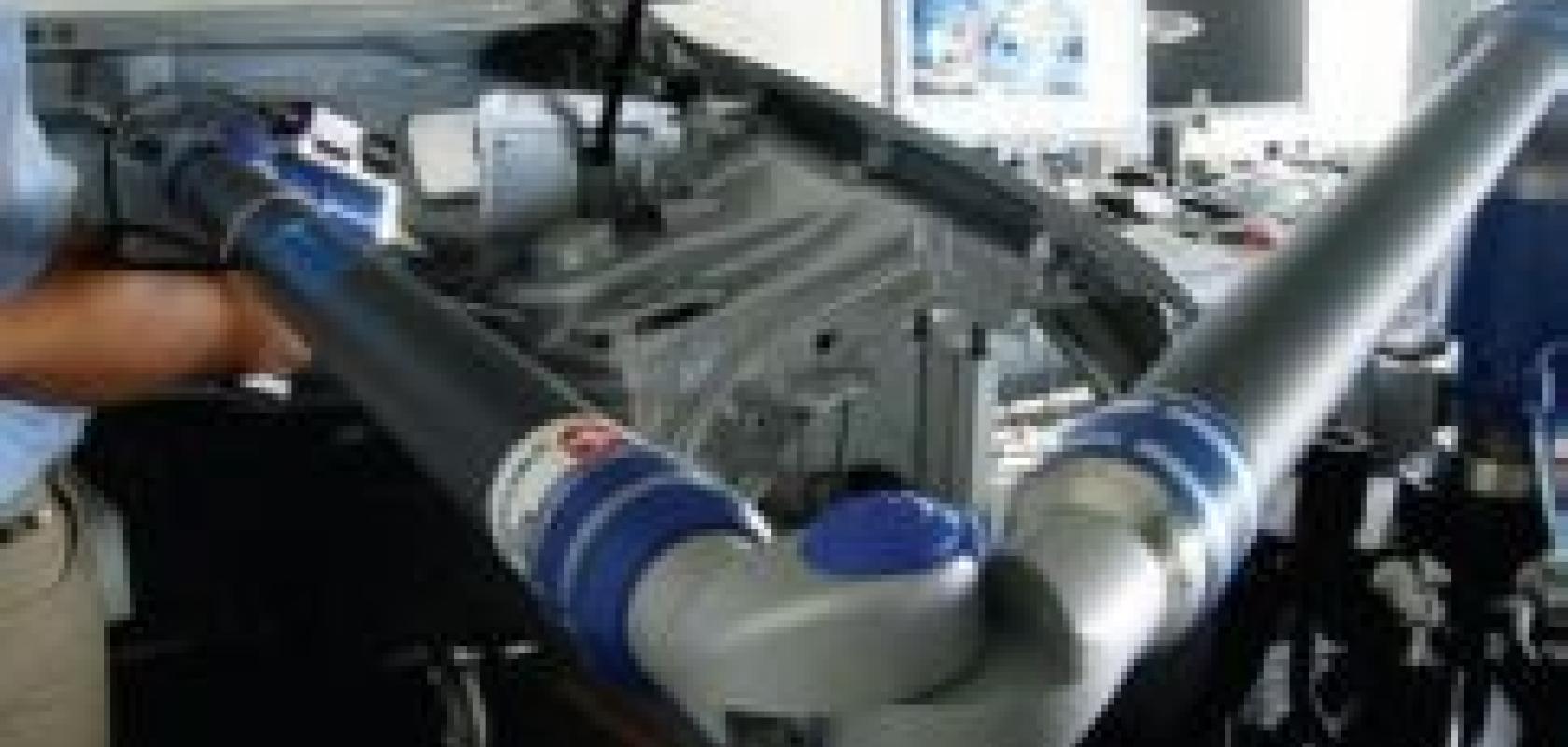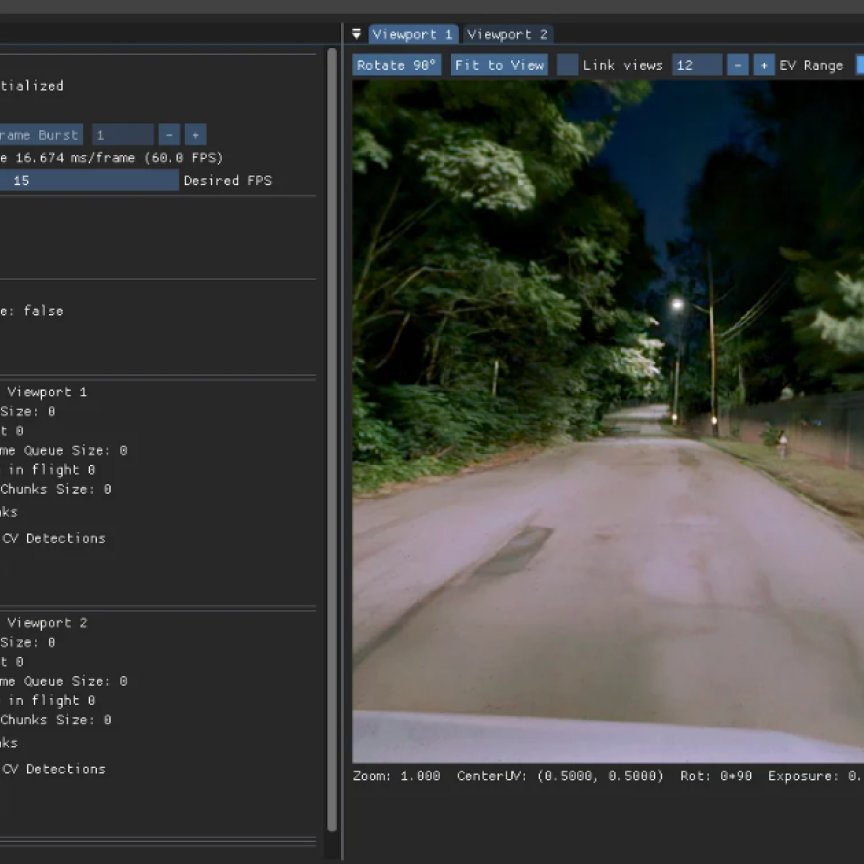While the economic situation has impacted heavily on the automotive sector – General Motors being the latest casualty, filing for bankruptcy in the US at the beginning of June 2009 – machine vision continues to play a crucial role in car manufacture to maintain production efficiency and vehicle quality. ‘There are two major applications of machine vision in the automotive industry: inspection and robot guidance,’ remarks Ben Dawson, director of strategic development at Dalsa. Robotics is used heavily on the automotive factor floor, but the tendency in the past was for robot pickers to carry out the process blind – which required parts to be positioned exactly. Integrating vision with robotic systems means that less precision is required when positioning parts in pick-and-place applications.
In manufacturing the shell of the vehicle, separate car body parts are assembled using bonding materials and sealants. Roof, side frames, engine cover, boot lid, doors, etc are joined using bonding and support adhesives, and the joining process uses vision both to guide robotic arms applying the sealant and also to inspect the quality of the application. Isra Vision’s image processing system EASI 3D carries out quality inspection and robot guidance in processing applications at Opel, VW, Mercedes and Ferrari, among other automotive manufacturers.
Isra Vision’s SeamStar 3D vision system is also suited to inspecting sealant application and is capable of identifying the position of the seam, its width, height, as well as any unwanted air pockets in the adhesive. The vision system inspects the seam while the sealant is being applied, operating at speeds of up to 500mm/s and performing checks every 2mm during a typical seaming application.
Holger Hofmann, vice president of industrial automation at Isra Vision, explains that the target application for SeamStar 3D is shaped beads (or seams) where there is no guarantee of clear contrasts between the bead and the background. ‘It is important that the system can handle different shapes of bead as well as different colours of the background and bead,’ he says.
Part inspection
Inspection systems are used throughout automotive production lines, but automotive part suppliers will also carry out rigorous in-house inspection before the parts are shipped. Faulty parts can be costly for automotive manufacturers and heavy fines are imposed on suppliers for delivering defective products.
Engineering Specialties Inc (ESI), based in Connecticut, US, is a supplier of small parts – mainly to the automotive industry. One of its products is a metal pin for automotive seatbelts. These pins are approximately one inch in length and 60 mils (60/1,000 of an inch) in diameter.
An inspection system, set up by Dalsa, was installed to measure the dimensions of the part. Pins are put into a feeder bowl, serialised, and dropped between a collimated light source and a high-resolution Dalsa camera with a telecentric lens. A photosensor detects the part as it falls and triggers image acquisition. Dalsa IPD’s Sherlock software then gauges the part at multiple diameters.
‘The number of defective parts is very low – a tiny percent of the 10 million parts manufactured annually,’ comments Dawson, of Dalsa. ‘However, these pins are key to the seatbelt mechanism and therefore key to the safety of the car’s occupants.’ ESI operates a zero-defect policy to ensure every pin is manufactured to the correct specifications.

The inspection system, developed by Dalsa, is used to measure the dimensions of metal pins used in automotive seatbelts. Image courtesy of Engineering Specialties Inc.
The lighting creates an orthographic projection, i.e. a 2D representation of a 3D object in the form of a shadow, but without any of the depth associated with the product. The setup ensures the size of the object doesn’t change depending on depth, and that the edges remain sharp, both of which are vital when inspecting small parts.
‘The vision system has to be fast enough to keep up with production, but the main requirement is for 100 per cent accuracy in support of the quality of parts,’ states Dawson. He says that machine vision has actually been relatively slow to infiltrate automotive manufacture in the US. However, US companies have come to realise that quality is important in the finished product. Replacing parts that fail when the car is still under warranty costs money, and Dawson notes that automotive manufacturers have become very proactive in demanding high-quality parts from second- and third-tier suppliers.
‘Online inspection systems are running throughout vehicle assembly and the manufacturer will stop the line if a defective part is found, resulting in losses of thousands of dollars an hour from production down-time,’ says Dawson. ‘There are contractual obligations between manufacturer and supplier and, if the cause of the problem is traced back to a defective part from a supplier, manufacturers will impose heavy fines on the company responsible.’
Prior to installing inspection systems, small part manufacturers, such as ESI, would typically carry out representative sampling of parts within a batch to check for defects. This, however, does not guarantee zero defects – and if one reject is found the whole batch is destroyed. All of this has led to a much wider use of machine vision by automotive part suppliers.
Augmented reality
Before the constituent parts are brought together in any form of large-scale production on the factory floor, there is a lengthy process of automotive design, engineering cycles and prototyping. Parts are tested – both virtually, using computer simulation models, and in prototype testing.
Metaio, with headquarters in Munich, Germany, is a company developing software aound the concept of augmented reality, whereby 3D animations are blended with live video streams. Its Unifeye Prototyping system is made up of a CCD camera from Allied Vision Technologies connected to a 3D measurement tool.
‘It [Unifeye Prototyping system] allows existing parts to be superimposed onto CAD geometries and therefore acts as a bridge between engineers developing the car and production staff building the car,’ explains Thomas Alt, CEO of Metaio. The technique allows engineers to verify prototype parts, ensuring they fit in the vehicle, that the holes for nuts and bolts are positioned correctly, etc. Audi, Daimler and Ford are a few of the car manufacturers using the system.
Alt comments: ‘When designing a new car, there are lots of engineering derivatives that potentially could be used in the final version.’ The system aids in analysis of the part for early identification of possible flaws in the design and gives a fast, reliable prototype verification. Alt says it also improves communication in the design team. Fitting the electrics into the existing design layout, for instance, can be carried out virtually – with all members of the design team involved to discuss implications of the different ways of doing this.
‘There is a drive to decrease the duration of engineering cycles in many industries, including automotive, and for systems that shorten these times,’ says Alt, who feels augmented reality will be used increasingly in the future.


